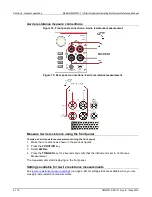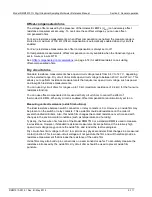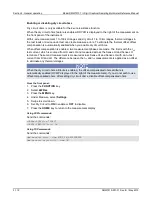
Section 2: General operation
Model DMM7510 7½ Digit Graphical Sampling Multimeter Reference Manual
2-124
DMM7510-901-01 Rev. B / May 2015
DC voltage ratio measurements
The DC voltage ratio function calculates the ratio between the measure input (numerator) and the
reference voltage (denominator). This function can be useful when comparing one or more voltages
to a single voltage. Only DC voltages can be compared.
The SENSE terminals are used as the reference voltage (V
s
). The SENSE terminals can measure DC
volts in 100 mV, 1 V, and 10 V ranges.
The INPUT terminals provide the voltage (V
i
) to be compared against the reference voltage. They can
measure DC volts in 100 mV, 1 V, 10 V, 100 V, and 1000 V ranges.
The ratio is calculated as:
SENSE HI and LO must be referenced to INPUT LO.
SENSE HI must not exceed 125 %, referenced to INPUT LO, of the selected sense range.
To access the extra value in the reading buffer, the reading buffer style must be set to full. The extra
value is available through the front panel in the Reading Details, through the SCPI command
(on page 6-155), and through the TSP command
(on page 8-
(on page 3-15) for information on setting the reading buffer style to full.
For example, if you have a 9 k
Ω/
1 k
Ω
resistive network, connect a 1 V source across the network.
Connect measurement Input HI and LO across the total 9 k
Ω/
1 k
Ω
resistive network and select the
1 V measure range. Connect Sense HI and LO across the 1 k
Ω
portion of the network and select the
100 mV range. The ratio measurement is approximately 10.00000.
Figure 88: DCV ratio 9 kohm/1 kohm resistor network example






























